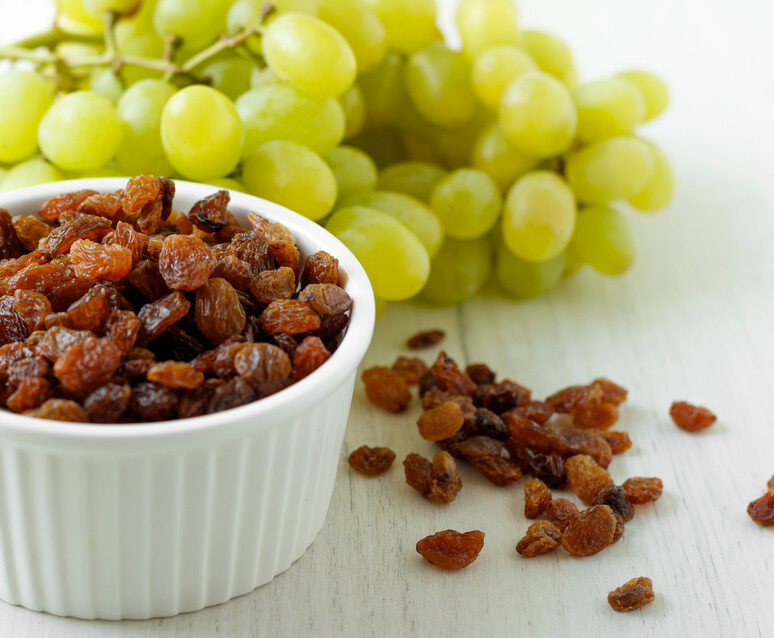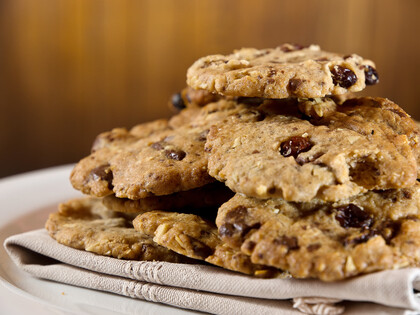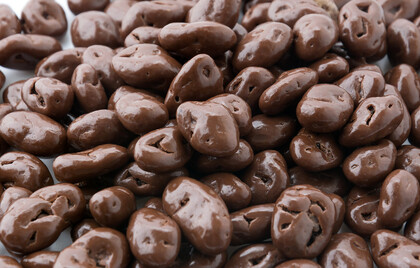


Raisins
Raisins are dried, white-fleshed, green-skinned grapes. Raisins are large and dark in colour, although golden raisins, as the name suggests, dry to a paler colour.
Although often thought of as a simple product, drying raisins involves a pre-treatment to remove waxes from the grape skin (which would otherwise prevent them drying out rapidly), the drying process itself, and then a final wash, dry and sort before packing.
FORMATS
Raisins
- Midget Raisins
- Golden Raisins
- Jumbo Flamne Raisins
- Milk Chocolate Covered Raisins
- Yoghurt Covered Raisins
OTHER POINTS TO NOTE
Raisins are toxic to dogs causing renal failure and potential death within 48 hours.
Raisins, sultanas and currants are often confused, as Americans use the terms slightly differently from the rest of the world.
Raisins than larger sized and slightly darker in colour than sultanas and slightly drier due to a different production method.
Currants (or Zante Currants) describe tiny, dark, dried grapes, rather than the traditional currant, which grows on a bush, not a vine.
COUNTRIES OF ORIGIN
- USA
- Turkey
- South Africa
HARVEST
- August - September in Turkey & US
- March-April in South Africa
VARIETIES
Raisin varieties are based on the grape variety and come in a range of sizes and colours.
Thompsons Seedless produces a large, paler raisin, while Flame grapes produce flame raisins. Sulphur dioxide may also be used in raisin production to produce a lighter-coloured 'golden' raisin.
NUTRIENT HIGHLIGHTS
- Very low in saturated fats, with just 1% of the calorific value coming from fats
- Low in Cholesterol and Sodium
- 3% Protein
- Key minerals include Potassium Copper and Manganese
- 96% of the calorific value comes from Carbohydrate, over 50% of which is from natural sugars
- Raisins have a low glycaemic index releasing sugars slowly
